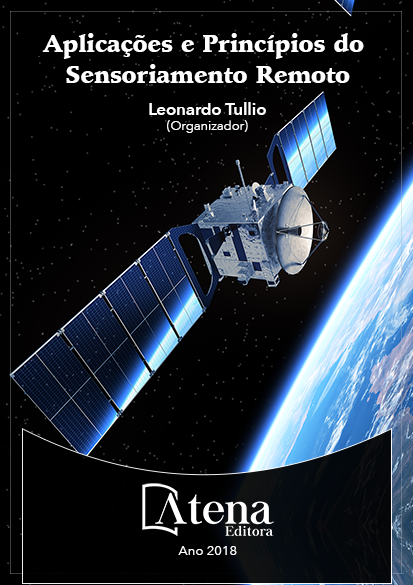
ESTUDO DO DESFLORESTAMENTO E QUALIDADE AMBIENTAL A PARTIR DO USO DE TECNOLOGIAS EM SENSORIAMENTO REMOTO
Esta pesquisa analisou, a partir de
imagens de satélites e índices ambientais, de
que forma o processo de expansão urbana
tem contribuído para a perda de vegetação
no município de Iranduba, Amazonas. Foram
utilizadas imagens do satélite Landsat 5, sensor
TM (Thematic Mapper) dos anos de 2003, 2005,
2010 e 2011, a partir das quais realizou-se o
estudo temporal do uso e cobertura do solo. A
classe de vegetação Floresta Ombrófila entre
os anos de 2003 e 2011, sofreu uma perda de
233.261 km2, o equivalente a 10.53% da área
total do município. A Floresta secundária, no
mesmo intervalo de tempo, teve um crescimento
de 206.725 km2 (9.33 %). Quanto à classe de
Área antropizada, mostrou crescimento em
todas as datas estudadas, tendo um crescimento
de 2003 a 2011 de 79.144 km2 (3.57%). A
partir de informações coletadas em campo,
calculou-se o Índice de Qualidade Ambiental,
que variou entre 0,60 e 0,43, indicando que
a área apresenta níveis críticos de qualidade
ambiental. Utilizando imagem landsat 5 - TM, do
ano de 2011, elaborou-se o mapa de vegetação
do município por meio do qual se extraíram
informações para a determinação dos Índices
de Cobertura Vegetal e Cobertura Vegetal por
Habitante. Os índices de vegetação calculados
(ICV – 73,05; ICVH – 1.765). De forma geral, os
resultados obtidos mostraram-se satisfatórios,
dentro da proposta de trabalho.
ESTUDO DO DESFLORESTAMENTO E QUALIDADE AMBIENTAL A PARTIR DO USO DE TECNOLOGIAS EM SENSORIAMENTO REMOTO
-
DOI: Atena
-
Palavras-chave: Landsat-5, Vegetação, Qualidade ambiental.
-
Keywords: Landsat-5, Vegetation, Environmental Quality.
-
Abstract:
This research analyzed, from
satellite images and environmental indexes, how
the process of urban expansion has contributed
to the loss of vegetation in the municipality of
Iranduba, Amazonas. Images from the Landsat
5 satellite, TM sensor (Thematic Mapper) of the
years 2003, 2005, 2010 and 2011 were used,
from which the temporal study of land use and cover was carried out. The vegetation
class Ombrophilous Forest between the years 2003 and 2011, suffered a loss of 233,261
km2, equivalent to 10.53% of the total area of the municipality. Secondary forest, in the
same period, had a growth of 206,725 km2 (9.33%). As for the class of Anthropized
Area, it showed growth in all the dates studied, having a growth from 2003 to 2011 of
79,144 km2 (3.57%). Based on information collected in the field, the Environmental
Quality Index was calculated, which varied between 0.60 and 0.43, indicating that the
area presents critical levels of environmental quality. Using a landsat 5 - TM image from
the year 2011, the vegetation map of the municipality was elaborated through which
information was extracted for the determination of the Indices of Plant Cover and Plant
Cover per inhabitant. The calculated vegetation indexes (ICV - 73.05, ICVH - 1.765). In
general, the results obtained were satisfactory, within the proposed work.
-
Número de páginas: 15
- Roberta Monique da Silva Santos


